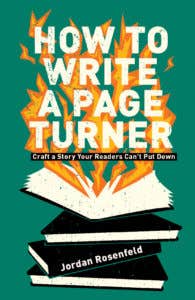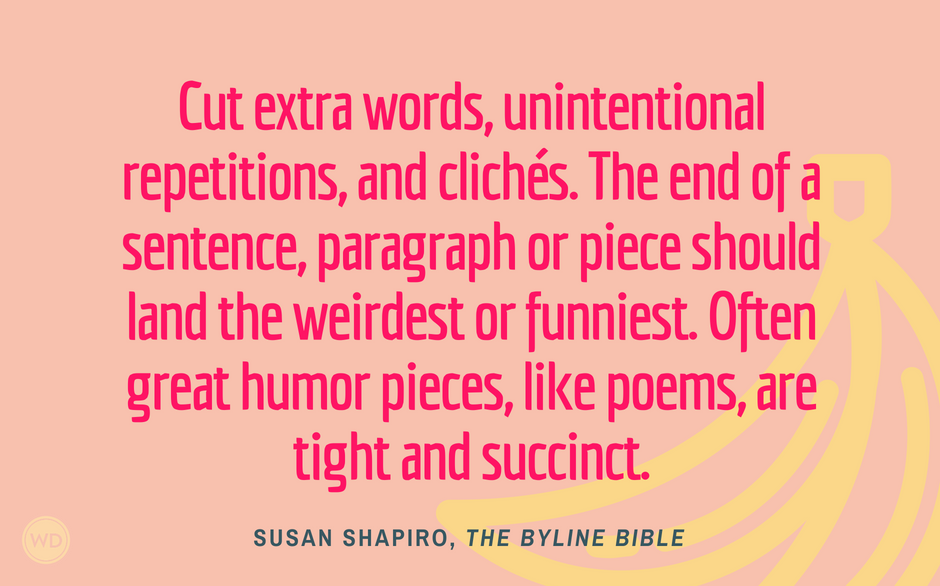Open Your Action Scene With Gusto
Learn how to build effective action scenes into your fiction
The American action movie has changed the way people think about action, and not necessarily for the better. We’re taught to think that buildings must explode, well-muscled men must leap off crumbling scaffolding, and small children must be rescued at the last minute from near death, or it doesn’t count as action. Actions can be smaller and more personal—the only requirement of an action scene is that it rely in part upon physical movement through the space you’ve created, and evoke a sense of time passing. In action scenes, the reader will feel like he is participating in action because:
- The events unfold in “real time,” allowing the reader to feel he is participating in the events of the scene
- The pace is quick, and there is some kind of physical movement
- The protagonist is forced to make quick decisions or to react—to run on instinct rather than intellect
- Unexpected consequences for the protagonist heighten the drama
Action scenes are the ones in which your protagonist acts first and thinks later—in a rage, in passion, or with any other motive, she smashes in the windshield of her cheating boyfriend’s car, drops that vengeful letter in the mail, or shows up on the doorstep of the father who never wanted her. Action scenes are also those in which forces catch your protagonist by surprise, thrusting her into motion: hurricanes, sinking boats, mistaken identities. An action scene in a literary novel might not seem as dramatic or big, but you will almost always find scenes in any type of fiction in which people move, react, and rely more on the physical aspects of life than they do on thinking or feeling.
Action scenes feel fast and often intense. Since they rely upon character reactions, they work best when there is something unexpected or surprising about the action—and that increases the reader’s worry for the protagonist. (However, too many action scenes in a row can leave your reader overwrought.) Action scenes are a natural fit after a suspense scene, since suspense drives characters toward conflict and action. They’re also great after an epiphany or contemplative scene in which the protagonist has digested some kind of important information and is now ready to do something about it.
This scene type will certainly drive the reader forward, but be warned that people have a tendency to skim action scenes, driven forward with their urgency, so you will want to balance them with other types of scenes.
Opening an Action Scene
An action scene is so named because the majority of the scene is composed of action unfolding. Therefore, even if you want to start out slow and build toward the action, be thinking about how soon you’re going to start the action.
Opening Mid-Action. In medias res is Latin for “in the middle of action”; beginning a scene in the middle of the action is a great way to open when you want to bypasses exposition. Opening in medias res forces readers to dive in and read on to figure out what is happening. You might open a scene like this when the scene that came before it ended on a cliffhanger, essentially continuing the action that was left dangling in the scene prior, or you may just choose to use this technique to keep the momentum of your narrative up-tempo.
Here’s an example from Neal Stephenson’s science fiction novel Snow Crash of a scene that opens with the protagonist already in action. Notice how the pace is quick right from the launch. In this future world, pizza delivery is controlled by the mafia, and delivering a pizza late means unemployment, possibly death. The scene before this one ends with the protagonist, Hiro (known as “the Deliverator”) on a cliffhanger of tension: He has just learned that he has to get an already old pizza (not a good thing) twelve miles in a very short period of time. The next scene opens with him in action:
The Deliverator lets out an involuntary roar and puts the hammer down. His emotions tell him to go back and kill that manager, get his swords out of the trunk, dive in through the little sliding window like a ninja, track him down through the moiling chaos of the microwaved franchise and confront him in a climactic thick-crust apocalypse. But he thinks the same thing when someone cuts him off on the freeway, and he’s never done it—yet.
He can handle this. This is doable. He cranks up the orange warning lights to maximum brilliance, puts his headlights on autoflash.
Opening in this manner allows the reader to feel the pressure that is on the protagonist. It also engages the readers’ curiosity. What’s going on? Why is the protagonist so upset? What would make him want to pull out his swords and kill the manager? The mid-action scene opening forces readers to carry on and find out.
When you open an action scene mid-action, the readers should be able to follow the essential action. They should know if your protagonist is running down a street, or in the middle of a crime scene investigation. They don’t have to know how, or why—but be sure you make what as clear as possible.
Opening With Foreshadowing. If your action scene does not open in the midst of action, then it must be set up to deliver action quickly. You can foreshadow the action that is coming through smaller actions or narrative summary without entirely giving it away. Vendela Vida’s novel And Now You Can Go opens with Ellis, a young grad student in New York, being held at gunpoint by a man. An action scene toward the end of the book opens with foreshadowing of the related action that is about to ensue:
In the elevator, I watch the numbers as we descend. Sarah’s standing with her back to the door, her legs planted and her arms out, as though she’s protecting me from whatever I’m about to see.
What she’s about to see is the man who held her at gunpoint—who was never caught by police. Two of Ellis’s friends, including one particularly volatile guy who is itching for a fight, have brought him there for Ellis to identify so they can proceed to beat him up.
That moment in the elevator prepares the reader for the fact that something is coming. The action comes pretty quickly once she gets off.
“El,” the ROTC boy says, “tell me if this is your guy, because if it is, he’s a dead man.” He’s holding the man’s arms behind his back. Everyone’s eyes are on me, including the man’s.
When you open an action scene with foreshadowing or narrative summary, try to keep it short, and simply set up the action that is coming with subtle hints—like the image of Ellis’s friend protecting her—and then let the action take center stage. Over-preparing the reader for an action to come can suck the energy or surprise right out of the scene.
Excerpted from Make a Scene by Jordan Rosenfeld (Writer's Digest Books, 2007).
Q & A with Jordan Rosenfeld:
Hear firsthand how Jordan Rosenfeld makes a scene.
Jordan Rosenfeld is author of Writing the Intimate Character, A Writer’s Guide to Persistence, Make a Scene, and Writing Deep Scenes (with Martha Alderson), all Writer's Digest books, as well as Write Free: Attracting the Creative Life (BeijaFlor Press, with Rebecca Lawton) and the novels Women in Red (Booktrope), Forged in Grace and Night Oracle. She is a former contributing editor to Writer's Digest magazine, and her many publications include Alternet.org, Creative Live, Mental Floss, the New York Times, Publishers Weekly, Salon, the San Francisco Chronicle, the Washington Post, XO Jane, The Writer magazine, and many more. Jordan presents and speaks annually at writers conferences and clubs. She regularly teaches online writing courses through her own website, as well as through Writer’s Digest University and leads a series of Plot & Scene retreats with Martha Alderson though their website: www.writerpath.com.









